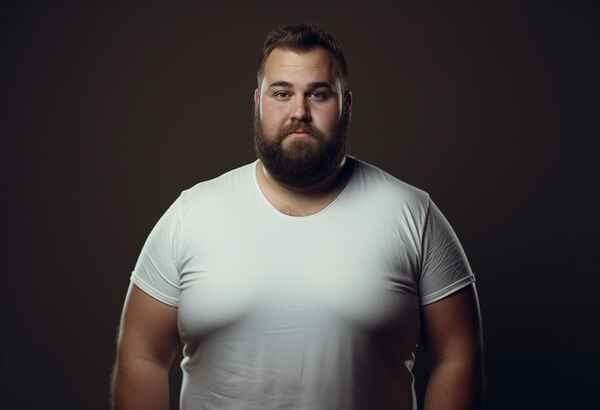If you’re a male struggling with enlarged breast tissue, commonly referred to as “man boobs,” you’re not alone. Many men experience this condition, known as gynecomastia. It can be caused by hormonal changes, certain medications, underlying health conditions, or excess fat in the chest area. While it may feel embarrassing or uncomfortable, it’s essential to know that there are ways to address this concern and reduce the appearance of man boobs.
Understanding the Causes of Man Boobs
The development of enlarged breast tissue in males can be attributed to various factors. Hormonal changes or fluctuations, such as an increase in estrogen levels, can play a significant role. Certain medications, family history, genetics, obesity, overactive thyroid gland, sex hormone deficiency, and specific diseases like Kallmann syndrome, liver or kidney disease, spinal cord disorders, and HIV, can also contribute to gynecomastia. Additionally, male breast cancer, though rare, can be a cause.
Treating Underlying Health Conditions
If gynecomastia is the result of an underlying health condition or medication use, addressing the root cause is crucial. Working closely with a healthcare professional can help determine the best course of action. In some cases, treating the underlying condition or switching to alternative medications may help reduce the appearance of man boobs. It’s important to note that the benefits of medication should always be weighed against any potential side effects.
Read : Battling Male Pattern Baldness: Effective Strategies and Treatments
Lifestyle Changes: Exercise and Diet
For individuals with excess fat contributing to the appearance of man boobs, making lifestyle changes can be instrumental in reducing their size. Regular exercise and a balanced diet can help shed overall body fat and build muscle tone in the chest area. Combining cardiovascular exercises like walking, running, swimming, or cycling with weightlifting exercises can help promote fat loss and muscle development.
Targeted Chest Exercises
While it’s not possible to spot-reduce fat in specific areas of the body, targeted chest exercises can help strengthen the pectoral muscles and improve the appearance of the chest. Some effective exercises to consider include:
- Push-Ups: This classic exercise engages the chest muscles and can be done at home. Start in a plank position with your hands shoulder-width apart, lower your body to the ground, and push back up.
- Barbell Bench Press: This exercise is commonly performed at the gym using a barbell. Lie on a bench, grip the barbell with a medium grip, lower it to your mid-chest, and push it back up.
- Pec Deck Machine: This machine is available at most gyms and targets the chest muscles. Adjust the seat height, sit down, grab the handles, and bring them toward each other as you contract your chest muscles.
- Bent-Forward Cable Crossovers: Stand in the middle of a cable machine, lean forward with a flat back, and cross your arms in front of your chest by pulling the cables toward each other.
It’s important to consult with a healthcare professional or a certified trainer before starting any new exercise routine, especially if you have underlying health conditions or concerns.
The Role of Diet
In conjunction with exercise, maintaining a healthy diet is essential for overall weight management and reducing body fat, including in the chest area. Gradual and sustainable changes to your eating habits can make a significant difference. Consider these tips:
- Keep a Food Journal: Tracking your current eating habits can provide insights into areas where improvements can be made. Identify high-calorie, low-nutrient foods and replace them with whole grains, lean proteins, fruits, and vegetables.
- Reduce Caloric Intake: Make small changes to your diet that are sustainable. Focus on eating whole, raw fruits and vegetables whenever possible. Use no or low-fat cooking techniques like steaming, boiling, or baking. Swap less nutritious snacks with fruits or vegetables.
- Opt for Nutrient-Dense Foods: Fruits and vegetables are low in calories, high in nutrients, and rich in water and dietary fiber. Incorporate them into your meals and snacks to feel fuller while consuming fewer calories.
- Avoid Quick-Fix Solutions: Be cautious of supplements or products promising rapid weight loss. These products are not regulated by the FDA and may not be safe or effective. Consult with your doctor before taking any supplements.
Remember, gradual weight loss of around 1-2 pounds per week is considered sustainable and can lead to long-term health improvements. It’s important to prioritize overall health and well-being rather than focusing solely on reducing the appearance of man boobs.
Seeking Medical Intervention
If lifestyle changes alone do not yield the desired results, surgical intervention may be an option to consider. Liposuction or surgical excision can be performed to remove excess breast tissue. However, this is typically a last resort and should be discussed with a qualified healthcare professional or plastic surgeon.
Conclusion
Enlarged breast tissue in males, commonly referred to as man boobs or gynecomastia, can be a source of embarrassment or discomfort. However, there are various approaches to address this concern. By understanding the causes and potentially treating underlying health conditions, engaging in targeted chest exercises, adopting a balanced diet, and making sustainable lifestyle changes, it’s possible to reduce the appearance of man boobs. Remember, consult with a healthcare professional for personalized advice and guidance throughout your journey.


